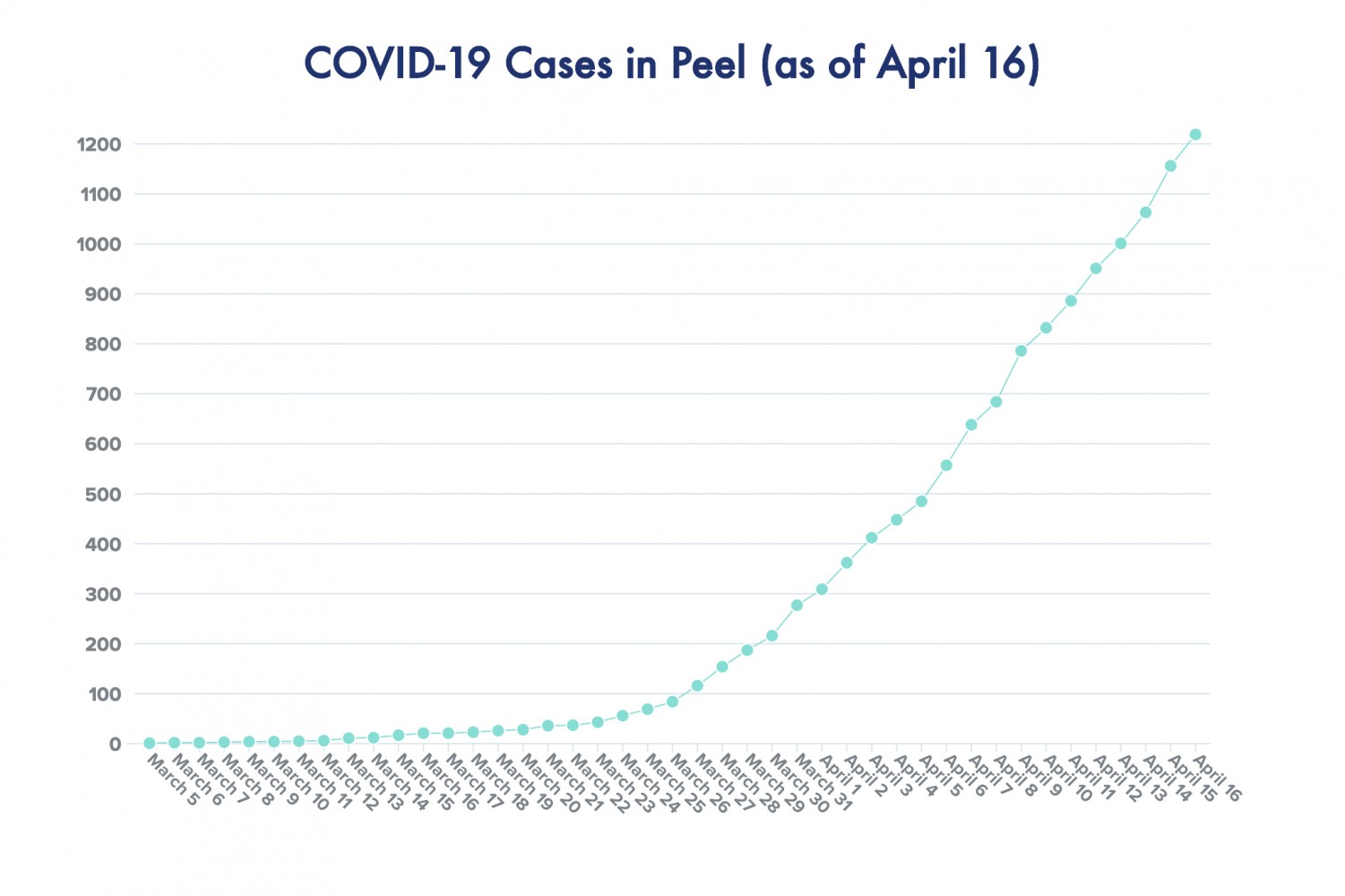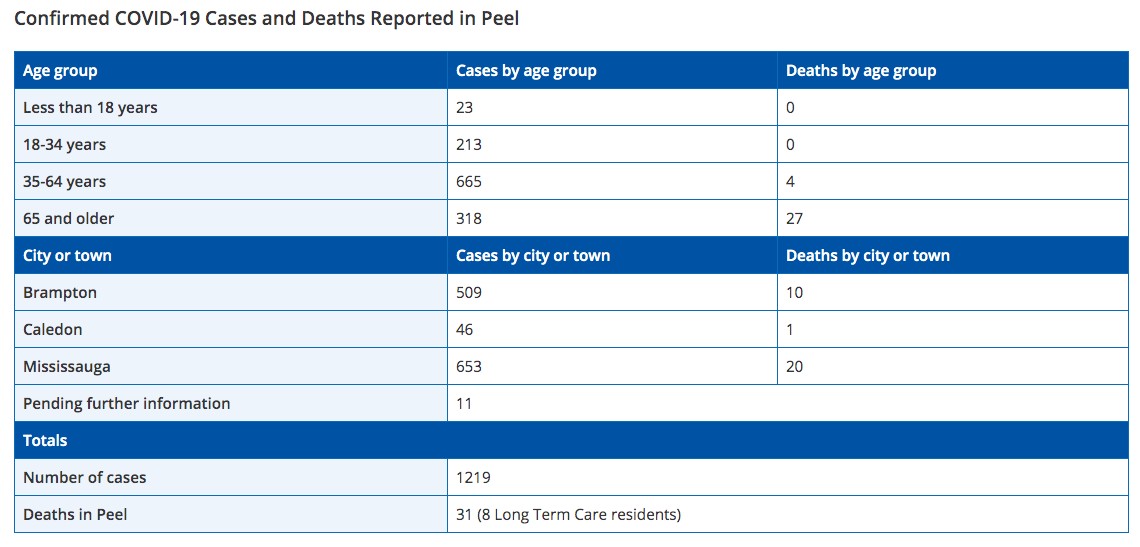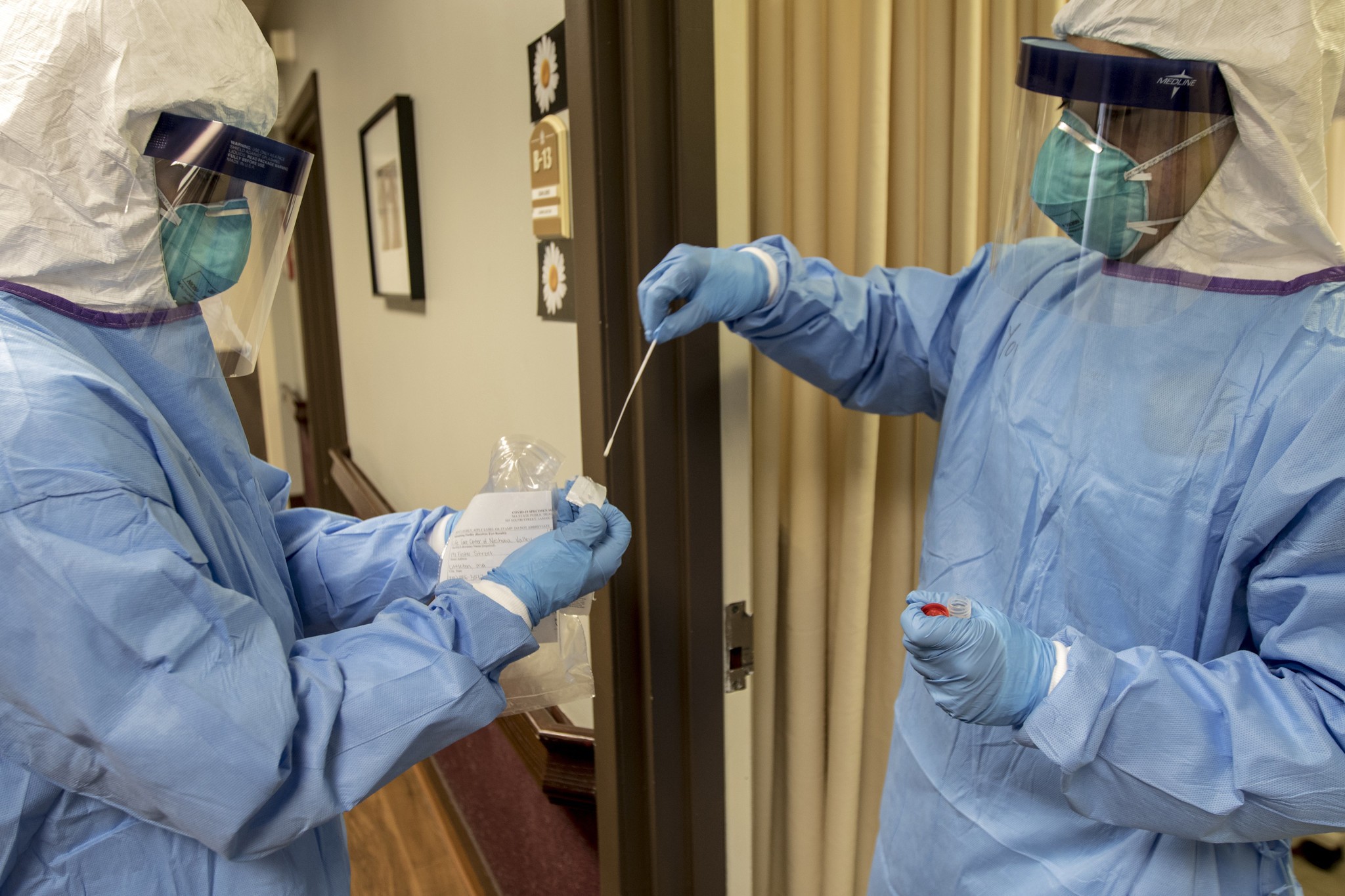
Deaths soar in Peel, 63 new cases of COVID-19 confirmed Thursday as efforts increase to help reeling long-term care facilities
Peel Public Health is reporting 63 new cases of COVID-19 Thursday, bringing Peel’s total to over 1,200.
Thursday morning also saw the region’s death toll from the virus spike to 31, from 25 yesterday. Eight of those deaths are linked to long-term care homes in the region.
In Canada, more than 1,000 people have been killed by the virus since the pandemic began here in January. The death toll is more than double what the federal government initially projected for this time period in modelling released last month.

During his daily briefing on Thursday, Prime Minister Justin Trudeau attributed the inflated total, in part, to the troubling spike in cases and deaths seen across the country’s long-term care sector.
In Ontario alone there are over 100 long-term care and retirement homes experiencing outbreaks, with three of those facilities reporting more than 20 deaths each. The 423 deaths reported in Ontario is a grim indication that measures are failing, after the province projected it could limit deaths to 200 by the end of April with strict measures.
It’s now clear that the province could end up at its projected worst-case scenario of 1,600 deaths by the end of the month, or even beyond.
“It’s impossible to imagine the anguish,” Trudeau said of those who have lost loved ones. He admitted Canada’s long-term care system needs to be improved to better care for elderly residents who are particularly vulnerable and at-risk of death if they contract COVID-19.
“We need to do a better job of being there for them,” he said.
In response to the surge in cases inside the province’s long-term care and retirement residences, Premier Doug Ford announced an enhanced action plan yesterday in order to increase testing in these homes, bolster staffing levels, and limit the spread of the virus by limiting the number of homes staff are able to work in, while halting the transfer of patients from hospitals into long-term care.
Ford said the front line of the battle against the novel coronavirus has shifted from hospitals into long-term care.
“Yesterday, we sent in the cavalry,” he said during his Thursday afternoon press conference, referring to teams of hospital-based units that have now been deployed to the hardest hit seniors’ homes to handle infection control, patient care and other medical needs.
The provincial government has received criticism for what many have viewed as a delayed response to the outbreaks unfolding in long-term care homes, while anger mounts over the latest announcement as many say it still does not go far enough to protect staff and residents in these homes.
“We are increasingly frustrated with the disconnect between the statements of the Premier and what is actually being put into the regulations, directives and guidance issued by his own government,” stated Natalie Mehra, executive director of the Ontario Health Coalition in a press release.
“Yesterday’s announcement was mostly a rehash of measures already announced, many of them less than what has been stated in daily press conferences by the Premier. More importantly, the measures that are being taken are too little and too slow, and the Ontario government appears to be relying too much upon isolation to contain the spread of the virus, which is not practically possible in many long-term care homes.”

Enhanced testing measures for staff and residents are being rolled out in Ontario's long-term care homes.
Specifically, the OHC states stricter testing must be put in place, wages for personal support workers need to be enhanced, and the requirement for staff to only work out of one care home needs to be extended to every employee. Currently, the OHC says the provincial order extends to PSWs, RPNs and registered nurses, but does not include temp agency staff, management, hired-in caregivers, and retirement home staff.
“We are inundated with calls and emails from families with loved ones in long-term care and staff in the homes, crying, afraid, furious about the lack of testing, even in homes with outbreaks,”Mehra stated. “Staff are contacting us because they are being required to work, even when they test positive, and they are afraid of infecting others. Workers are angry and they are frightened and the many family councils we work with share their anger. They are taking risks to provide care but feel they are being blamed for the outbreaks, have been required to give up part-time jobs, but still nothing has been done to address their long-standing grievances about poor pay, heavy caseloads, and conditions of work.”
According to Peel Public Health, there are currently 12 long-term care facilities across the region experiencing COVID-19 outbreaks.
Data from the Government of Canada shows the toll the disease has taken on our elderly population with those over the age of 60 representing approximately 65 percent of hospitalizations from COVID-19, 63 percent of ICU admissions and 93 percent of deaths.
Email: [email protected]
Twitter @JoeljWittnebel
COVID-19 is impacting all Canadians. At a time when vital public information is needed by everyone, The Pointer has taken down our paywall on all stories relating to the pandemic to ensure every resident of Brampton and Mississauga has access to the facts. For those who are able, we encourage you to consider a subscription. This will help us report on important public interest issues the community needs to know about now more than ever. You can register for a 30-day free trial HERE. Thereafter, The Pointer will charge $10 a month and you can cancel any time right on the website. Thank you.
Submit a correction about this story


